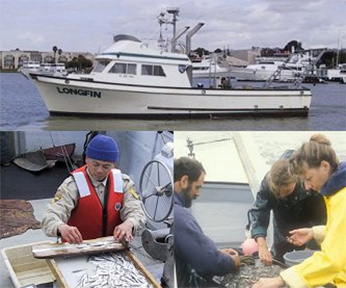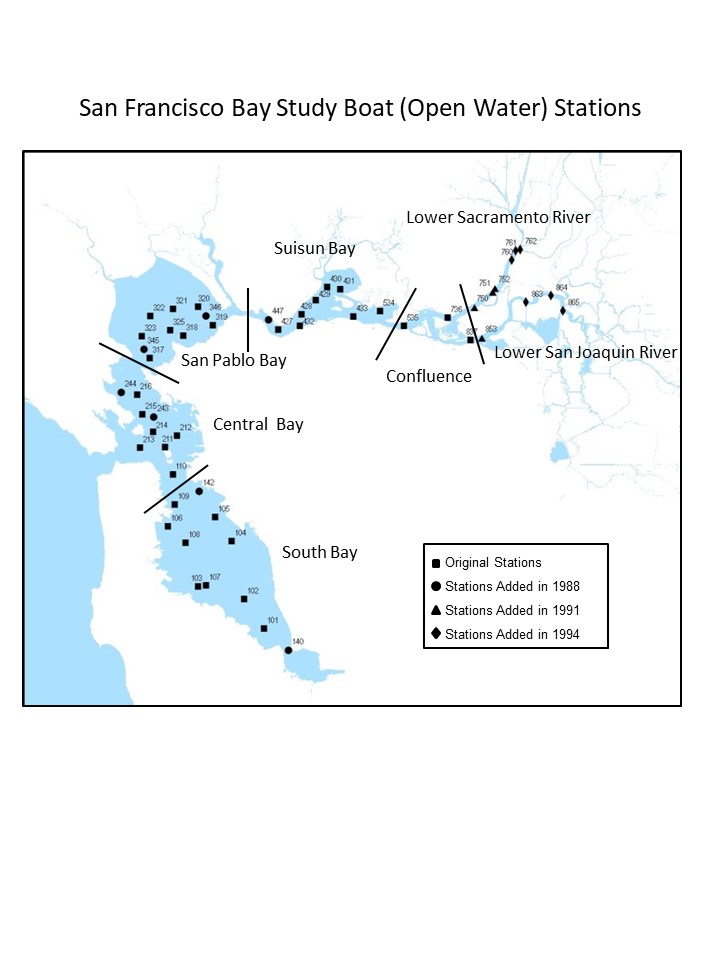Project Overview

The San Francisco Bay Study (Bay Study) was established in 1980 to determine the effects of freshwater outflow on the abundance and distribution of fish and mobile crustaceans in the San Francisco Estuary, primarily downstream of the Sacramento-San Joaquin Delta.
Sampling ranges from south of the Dumbarton Bridge in South San Francisco Bay, to just west of Alcatraz Island in Central San Francisco Bay, throughout San Pablo and Suisun bays, north to the confluence Steamboat and Cache sloughs on the Sacramento River, and east to Old River Flats on the San Joaquin River. The open water or boat survey samples 52 stations monthly: 35 original stations, 7 stations added in 1988, 4 stations added in 1991, and 6 stations added in 1994. The study included a beach seine survey, discontinued in 1987, and a shore-based ringnet survey for crabs, discontinued in 1994.
The Bay Study uses a 42-foot stern trawler to sample with 2 trawl nets at each open water station. The otter trawl, which samples demersal fishes, shrimp, and crabs, is towed against the current at a standard engine rpm for 5 minutes then retrieved. The midwater trawl, which samples pelagic fishes, is towed with the current at a standard engine rpm for 12 minutes and retrieved obliquely such that all depths are sampled equally. The open water survey included a plankton net that sampled larval fish and crustaceans, but this was discontinued in 1989.
Fish, caridean shrimp, and brachyuran crabs are identified, measured, and counted. Shrimp and crabs are also sexed. Sampling effort is quantified (i.e. distance towed, volume of water filtered) and salinity, water temperature, Secchi depth, and station depth are measured; wave height, tide, cloud cover, and tow direction are categorized. The length, catch, and effort data is used to calculate catch-per-unit-effort (CPUE) by species and age class. The CPUE data is used to calculate monthly and annual abundance indices, which are used to track seasonal and annual population trends. Important factors that control or regulate abundance and distribution of fish and mobile crustaceans in the estuary include salinity, temperature, freshwater outflow, ocean temperature, upwelling, and surface currents, primary and secondary productivity, and introduced species. We are interested in how species respond to changes in the physical environment on several temporal scales – seasonal, annual, decadal, and longer.
We produce several annual Status and Trends reports that summarize recent changes for the most commonly collected species. These reports are published in the Spring issue of the IEP Newsletter. The 1999 IEP Technical Report, “Report on the 1980-1995 Fish, Shrimp, and Crab Sampling in the San Francisco Estuary, California”, is a good source of basic information (this report is out-of-print).
Station Map
